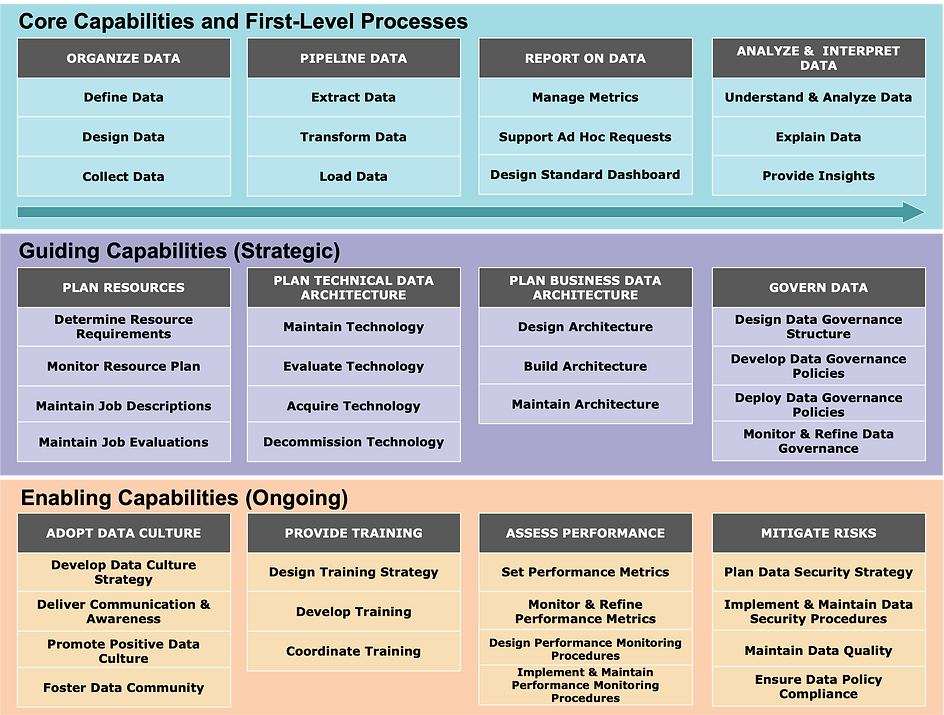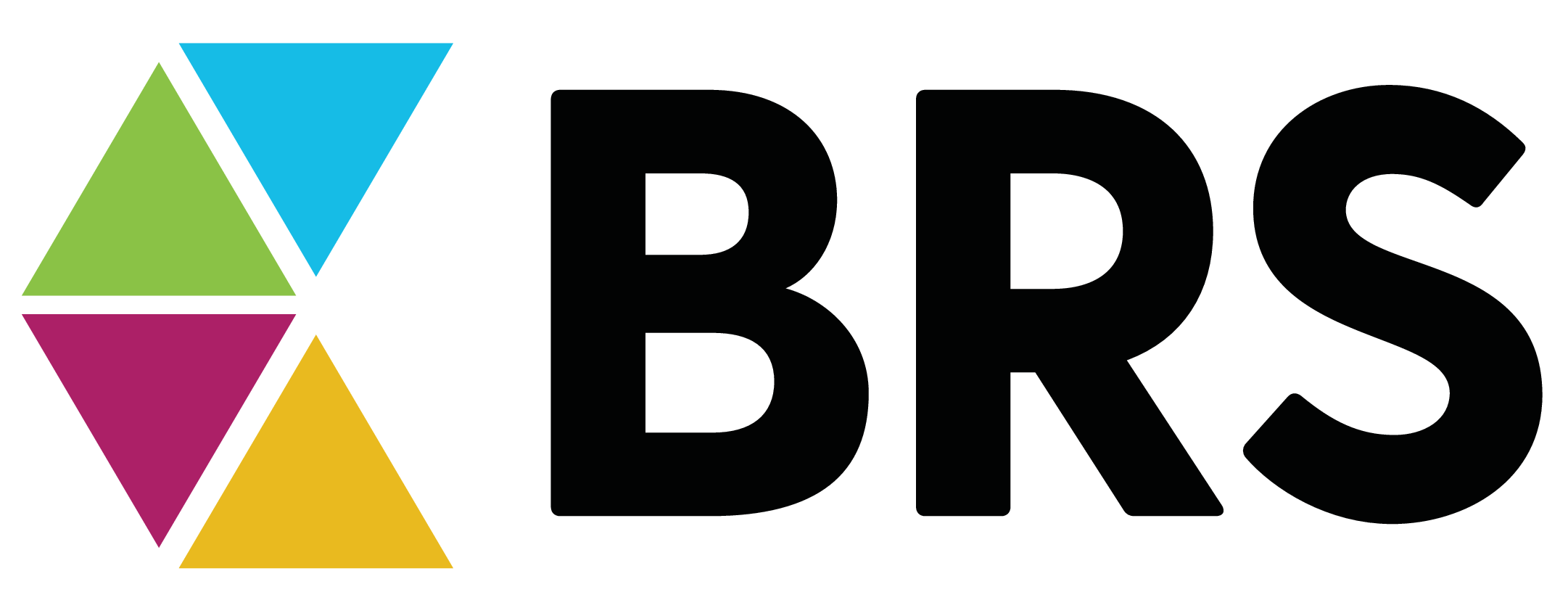BRSdata Capability Matrix™
Explore BRSdata’s capability map to discover services that fit your company best.
The structure of data teams differs from organization to organization. These teams are sometimes decentralized, sometimes centralized; sometimes they are on the business side and sometimes on the technical side. This often makes it very hard for data teams to know what they should be responsible and accountable for across the organization. People from diverse backgrounds who have different experiences with data organizations may have very different expectations of what the team should be accountable for.
We created the BRSdata Capability Map™ to guide data organizations and ensure they cover everything they should be accountable for, covering both Operational Data and Analytical Data organizations.
How to Read the Map
The BRSdata Capability Map has three rows, each representing a different set of capabilities a data team should be accountable for. The first row, Core Capabilities, outlines the critical outputs a data team needs to produce. The second row, Guiding Capabilities, shows the strategic decisions that a data team needs to ensure the Core Capabilities’ long-term health and scalability. The third row, Enabling Capabilities, discusses the ongoing processes required to ensure the Core Capabilities are running efficiently and responsibly.
Core Capabilities
The Core Capabilities of a data organization are the ones that the organization expects them to accomplish — the “keeping the lights on” activities. This is what stakeholders expect from the data team. At a company like UPS, the Core Capabilities are 1) being able to drop off a package in-store or have it picked up, 2) having it shipped within a pre-specified amount of time, and 3) arriving at the prescribed destination without damage. Similarly, data is accountable for such Core Capabilities as
- Organizing Data
- Pipelining Data
- Reporting on Data
- Analyzing & Interpreting Data
Guiding Capabilities
The Guiding Capabilities are the ones that allow the data organization to plan strategically for the long term. These capabilities elevate a team from constantly fielding immediate-need requests and instead focus on building out infrastructure and organization that can produce repeatable processes and analyses for consistent use. These are strategies that allow the team to perform the Core Capabilities better. The Guiding Capabilities for data are
- Planning Resources
- Planning Technical Data Architecture
- Planning Business Data Architecture
- Governing Data


Enabling Capabilities
The Enabling Capabilities are those that need to be done consistently to enable the efficient and responsible execution of the Core Capabilities. They are the policies and practices that equip team members and stakeholders with the skills and guardrails to interact with and understand data. The Enabling Capabilities are
- Adopting Data Culture
- Providing Training
- Reporting on Data
- Mitigating Risks
Conclusion


